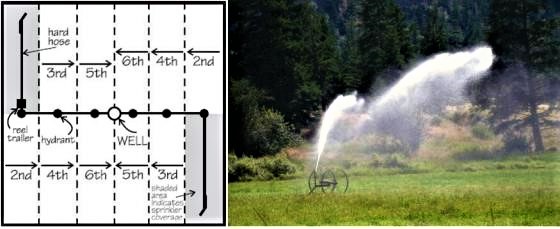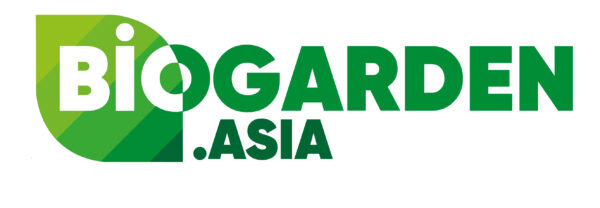No products in the cart.
NEWS
Sprinkler Irrigation
Sprinkler Heads
Impact and gear-drive sprinklers are two general types of sprinklers used in lawns, gardens and pastures. They produce moving streams of water and spray nozzles that discharge water on the whole wetted pattern at all times. Impact or gear-drive sprinklers can accommodate only full or part circle application patterns. Since each sprinkler covers a large area (typically 12 m head-to-head spacing), they are used on pastures and larger lawn areas.
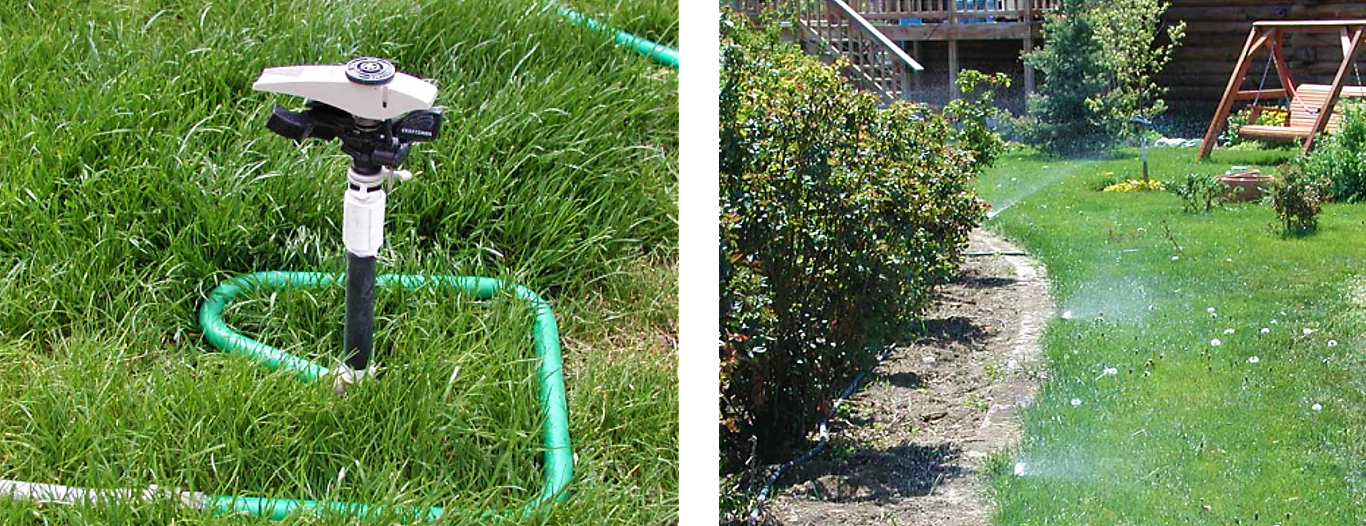
These sprinklers may be used in a solid set configuration where sufficient nozzles are installed to cover all parts of the desired area drawing water from a surface or buried mainline and laterals. Or they can be used in a set-move configuration where lateral lines are operated and then moved at intervals of 12 or 24 hours. Solid set systems cost more to install, but have lower labour requirements and may be automated. The equipment and installation cost per acre of set-move systems is less expensive, but their operation requires more labour, as they cannot be completely automated.
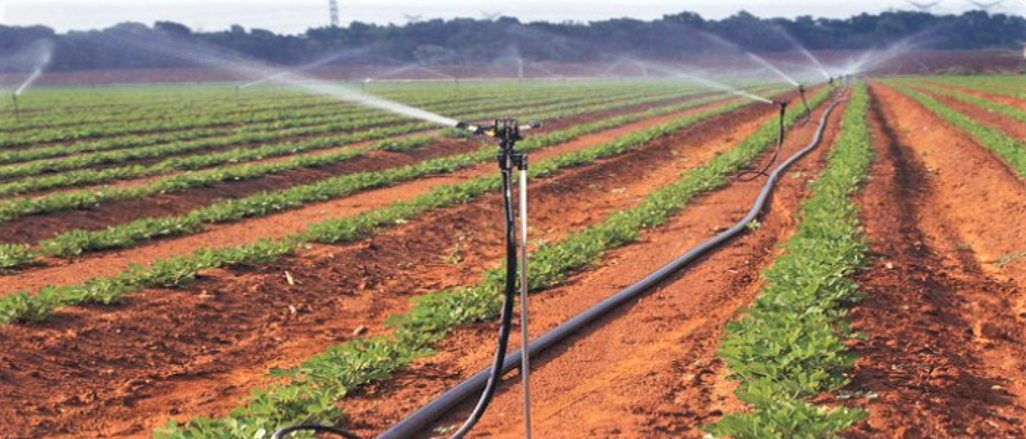
Centre Pivot
This self-propelled sprinkler system rotates around the pivot point and has the lowest labour requirements of the systems considered here. It is constructed using pipes attached to moveable towers. The amount of water applied is controlled by the speed of rotation. Centre pivots can be adjusted to any crop height and are particularly suited for lighter soils. With a computerised control system, the operator is able to program many features for the irrigation process. Furthermore, it is possible to install a corner attachment system (also called “end-gun”) that allows irrigation of corner areas missed out by conventional centre pivot systems.
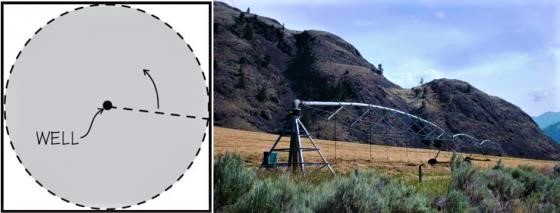
Linear Move
The linear move (also called lateral move) irrigation system is built the same way as a centre pivot; that is moving towers and pipes interconnecting the towers. The main difference is that all the towers move at the same speed and in the same direction. Water is pumped into one of the ends or into the centre. Due to the high capital investment, linear moves are used on high-value crops such as potatoes, vegetables and turf.

Travelling Big Gun
The travelling big gun system uses a large-capacity nozzle and high pressure to throw water out over the crop as it is pulled through an alley in the field. Travelling big guns come in two main configurations: hard-hose or flexible-hose feed. With the hard-hose system, a hard polyethylene hose is wrapped on a reel mounted on a trailer. The trailer is anchored at the end or centre of the field. The gun is connected to the end of the hose and is pulled towards the trailer. The gun is pulled across the field by the hose winding up on the reel. With the flexible-hose system, the gun is mounted on a four-wheel cart. Water is supplied to the gun by a flexible hose from the main line. A cable winch pulls the cart through the field towards the cart.
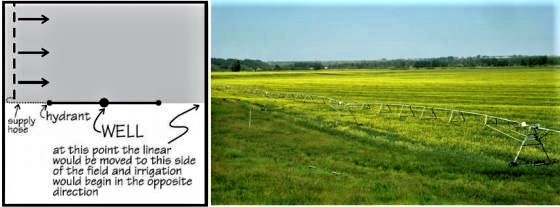
Side Roll
The side roll (also called wheel roll) system consists of a lateral, usually a quarter mile long, mounted on 4 to 10 foot (1 to 3 meters) wheels in diameter and the pipe serving as an axle. When the desired amount of water has been applied to an area, a gasoline engine at the centre is used to move the side roll to the next. The sprinklers are generally mounted on weighted, swivelling connectors so that no matter where the side roll is stopped, the sprinklers will always be on top. This type of system is not recommended for gradients greater than 5 per cent and should be used mainly on flat ground. Side roll systems are adapted only to low growing crops, have medium labour requirements and moderate initial investment.
